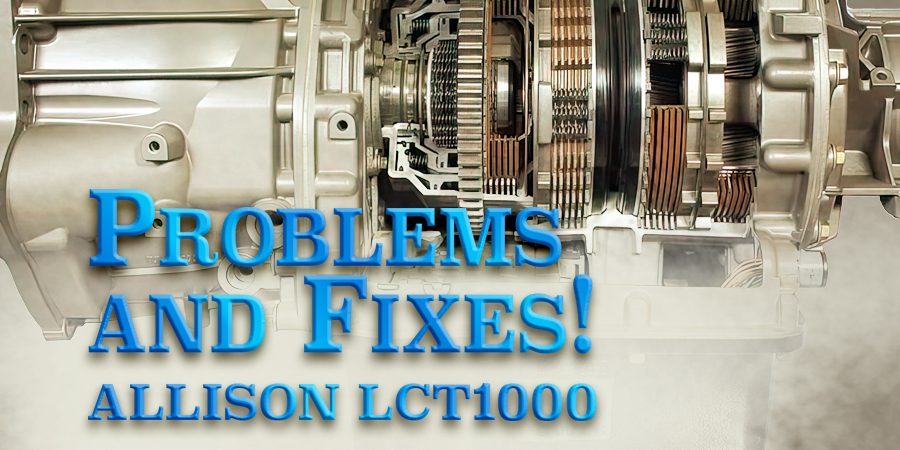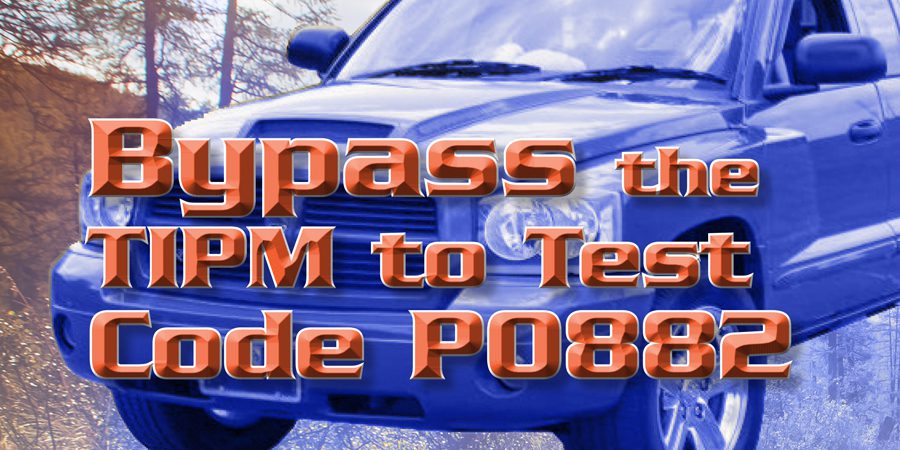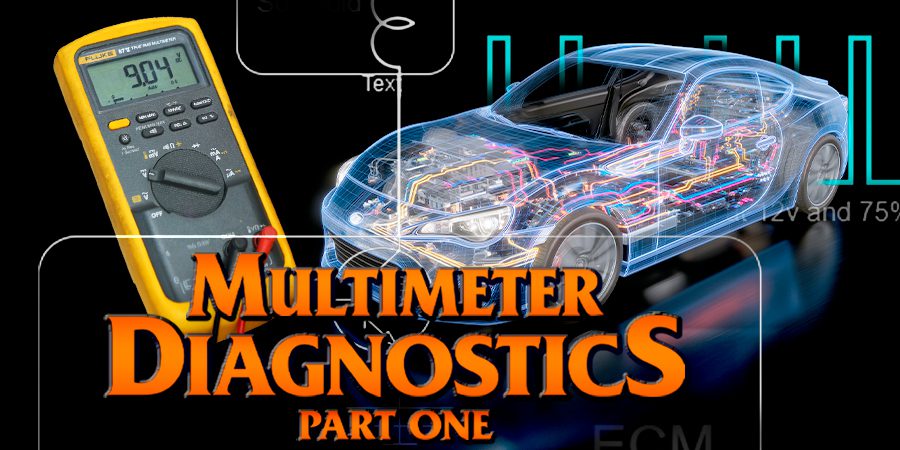The Allison LCT1000 has been a mainstay transmission for heavy-duty General Motors applications since 2001. They have logged millions of miles behind the 6.6L Duramax diesel and 8.1L gas motors. As a result, the LCT1000 can be found in vehicles ranging from pick-up trucks to motorhomes and dump trucks.
While it has proven to be a reliable unit, some patterned failures come into play. Also, as with any long-run unit, some updates and improvements have been made throughout the life of this transmission. So let’s tour some common problems, fixes, and updates that will help you diagnose and repair these units!
FIRST THINGS FIRST…
Compared to earlier Allison units, the LCT1000 has one significant difference; electronic controls! Yes, the LCT1000 model was the first time a fully electronically controlled aluminum valve body was used in an Allison application. As a result, new, unique concerns arose as these units began to age.
One major concern is the wiring harness, both internal and external. Diesel applications are more prone to having external wiring issues. A diesel engine’s constant vibration affects the harness, like bending a coat hanger repeatedly. In addition, the internal strands of wire within the wire casing tend to break with time.
Another problem is harness rub through concerns. Vehicles with 200k miles and over may come into the shop needing transmission repairs with no electrical codes. Still, codes appear after handling the wiring harness during the removal and installation process. Therefore, when confronted with a high-mileage diesel, it is wise to assess the harness condition and price a replacement or plan for a repair. Also, be aware that most vehicle-side harnesses are unavailable or in short supply. Prepare the customer and your technicians for the worst-case-scenario because you don’t want to do it for free later!
Another high mileage concern is valve body wear. Issues are more prominent with the earlier applications that have trim valves. The trim valve bores are notorious for wear, causing soft or harsh shifting and burnt clutches. There are aftermarket solutions available to solve most wear issues.
Another valve body related concern is warpage. A common sign of warpage is sticking valves after the valve body was assembled and torqued. Isolate sticking valves and check their freedom of movement with the valve body disassembled, assembled, and torqued to verify they are working correctly. Also, do not remove or disassemble this valve body while it is hot!
COMMON FAULTS
The first through third-generation LCT1000s may experience various shift and other operational issues. Applications from 2001-2005 may display any or all of these concerns:
- DTCs set for any input or output for the TCM
- Hard, slipping, flare on shifts, no shifts
- Transmission operating in default, limp in mode
- Erratic operation, which may be intermittent
 The TCM used on the Generation one through three applications utilizes three connectors, each with 32 pins. The pins are pushed to the seat design and are held in position by a lock tab for each pin. However, it is common for the lock tab to fail to hold the pin in the correct position leading to connection issues (figure 1).
The TCM used on the Generation one through three applications utilizes three connectors, each with 32 pins. The pins are pushed to the seat design and are held in position by a lock tab for each pin. However, it is common for the lock tab to fail to hold the pin in the correct position leading to connection issues (figure 1).
Remove the Terminal Position Assurance (TPA) clips and inspect for backed-out terminals. The connectors are available from several sources if the lock tab is broken.
Intermittent faults and concerns are common with Generation 4 Allisons. They were manufactured between 2006-2014 for light-duty vehicles and 2006-2012 for medium-duty applications. They are six-speed units as opposed to the earlier units, which are five-speed.
Gen 4 applications use the A50 TCM produced by Motorola and is identified by the pins cast into the heat sink on one side of the controller (figure 2). Unfortunately, these modules are prone to failure.
 The Gen 4 applications can produce various symptoms and DTCs that can be caused by issues with the TCM. These include:
The Gen 4 applications can produce various symptoms and DTCs that can be caused by issues with the TCM. These include:
- Range sensor/IMS DTCs
- Speed sensor DTCs
- Communication DTCs
- No reverse
- No shifts, hard shifts, flare shifts
- Neutral only, no movement
- Transmission in default 3rd or 5th
- ECM/PCM compatibility DTC (Usually P0614)
- SES light
- Traction control and park assist inoperative
- Transmission temperature and gear position dash indicators may go blank/incorrect.
- Driver information center may display range shift inhibit, service brake system, Service Stabilitrac messages
- Blown TCM fuse
If it is determined that the TCM on your application is the cause of your issue, make sure the PCM/ECM, TCM, and other module grounds are checked before replacing the TCM. A faulty ground is one of the most common causes of the A50 control module failure. The grounds should be checked using a voltage drop and NOT an ohm meter. Remember, the replacement TCM will require programming, and the adapts must be relearned.
NOTEWORTHY UPDATES
Ordering hard parts for the LCT1000 can be a challenging task. It is critical to know the generation of the unit you are repairing. Changes in geartrain, valve bodies, pump assemblies, and other internal components are too numerous to mention in this article! However, we will note a few recent changes that could create issues. There are some updates for the 2015-2016 model year Allison transmissions.
- A redesigned pump: The updated pump eliminates the 1-2-3-4 exhaust valve and bore located in the pump on the previous design (figure 3).
- A redesigned TCM was changed to the T87 CAN Bus TCM, the same as the 8L90. It uses a 66-pin connector. The change occurred in mid-2015.
- The input and output speed sensors are now “Hall Effect” design sensors rather than permanent magnet generator designs.
We outlined in previous ATRA seminars various pump updates implemented through the years on the Allison applications. In 2005 an update to the pump occurred that changed the number of pump gear teeth from 31 teeth to 22 teeth (figure 4). If you are installing the updated design into an earlier model application (pre-2005), you must also install the updated wear plate. Failure to do so can result in pump-related issues.
For pre-2004 applications, updating the late pump requires changing the gears and plate. Order the necessary parts.
| UPDATED PART | PART# |
|---|---|
| Wear Plate | 29542799 |
| O-Ring | 29537620 |
| Pump Kit | 29545809 |
(Pump Kit includes gears, Wear Plate and O-ring)
As transmissions age, they develop issues never seen in their earlier years. ATRA keeps you informed of new problems as we encounter them to help you get to a diagnosis quickly. Since the Allison transmission is such a workhorse, I’m sure there will be other future problems and fixes to share. So, stay tuned!



















